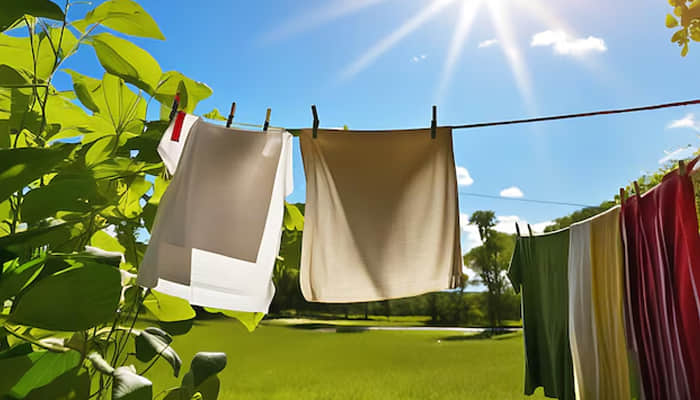
Sun-drying clothes feels like one of those wholesome, eco-friendly things we all should do. After all, it’s free, uses no electricity, and leaves your laundry smelling fresh. But here’s the truth: that bright sunshine might actually be doing more harm than good—especially if you dry clothes the “natural” way too often. Certain drying habits, although popular, could be silently wearing out your clothes, fading the colors, and even breaking down the fibers. Let’s unpack why—and how to avoid it.
UV Light: The Silent Fabric Killer
When you hang your clothes out in direct sunlight, they’re soaking up more than just heat. Ultraviolet (UV) rays in sunlight are known to weaken fabric over time. Just like UV light can damage your skin, it can also damage the structure of cotton, linen, and synthetic blends. Clothes left in harsh midday sun may end up feeling thinner, rougher, or more brittle, especially after repeated drying.
Fading Colors Faster Than You Realize
One of the most obvious signs of sun damage is color fading. Brightly colored shirts, jeans, or printed fabrics often look dull and washed out after a few drying sessions in full sun. This happens because UV rays break down the chemical bonds in fabric dyes. Red, blue, and black items are especially prone to fading, and once it starts, there’s no way to bring the original vibrancy back.
That Stiff Feeling? It’s Not Just Hard Water
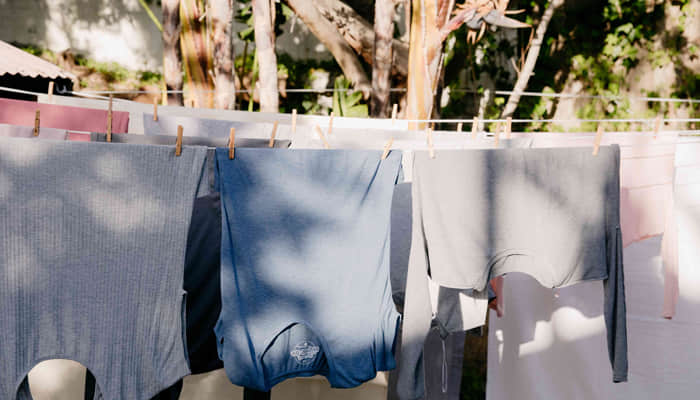
Ever wonder why clothes feel stiff or crunchy after sun-drying? While hard water minerals can contribute, direct sunlight also plays a role. The heat causes moisture to evaporate too quickly, especially from cotton and other natural fibers, leaving them stiff. Fabric softener can’t fully fix it because the fiber structure is being altered by intense heat.
Elastic Waistbands and Delicate Items Break Down Faster
Sunlight and heat are particularly harsh on elastic. If you’ve noticed your underwear, socks, or leggings losing stretch faster than expected, it could be your drying method. The rubber or synthetic materials in elastic bands weaken when exposed to UV light and high heat, leading to sagging, poor fit, and early replacement.
Drying Clothes Inside Out Helps—But Only a Little
A lot of people turn clothes inside out before sun-drying, hoping to protect the colors. It does help reduce fading on the outer side, but UV rays still penetrate the fabric. Over time, even the inside will fade or weaken. This method buys you time, but it doesn’t fully prevent the damage.
White Clothes Can Yellow in the Sun
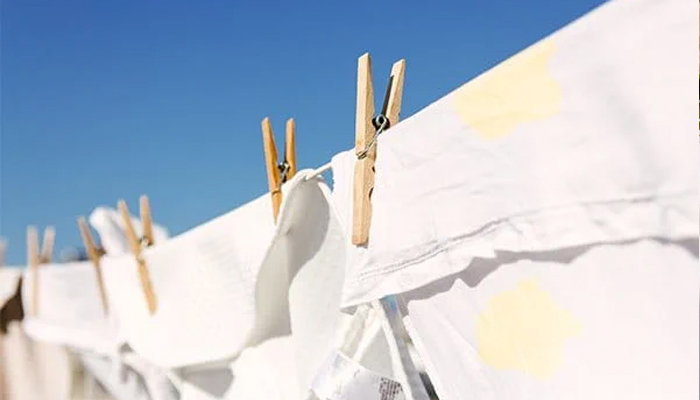
It sounds strange, but it’s true. While sunlight can bleach white fabrics and remove stains, overexposure can lead to yellowing—especially on synthetic fabrics or items with detergent residue. This is due to a chemical reaction between the UV light and leftover chemicals or body oils in the fabric. That fresh, white T-shirt might not stay bright for long.
Morning or Late Afternoon Sun Is Gentler
If you still want to sun-dry, timing makes a difference. Drying clothes in the early morning or late afternoon—when the sun is lower and UV levels are milder—reduces fabric damage. Avoid peak hours between 10 a.m. and 3 p.m., when UV exposure is strongest. It may take longer for clothes to dry, but they’ll stay in better condition.
Choose a Shady or Semi-Shaded Spot
A good compromise is drying clothes outdoors in a well-ventilated, shaded area. You still get the fresh air and energy savings, but you limit direct exposure to UV rays. A covered porch, under a tree, or under a UV-blocking drying rack are all good options. Your clothes will still dry, just a bit slower—and far more gently.
Mesh Drying Racks Can Prevent Stretching
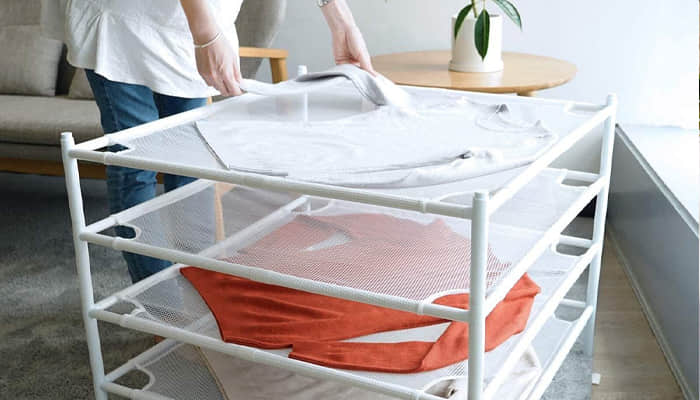
If you dry knits or heavier clothes outside, avoid hanging them by the shoulders or waistband, which can cause stretching and misshaping. A flat mesh drying rack, even placed outdoors, helps them keep their shape while reducing stress on seams and elastic areas. It’s especially useful for sweaters, bras, and leggings.
Avoid Metal Hangers and Rust Marks
One more hidden danger of outdoor drying? Rust. Metal hangers can leave rust stains on damp clothes, especially if they’re exposed to morning dew or humidity. Use plastic or wood hangers, or better yet, clip clothes to a plastic-coated line to avoid surprise stains.
Thin Curtains, Bedsheets, and Towels Are Most at Risk
Lightweight fabrics like curtains or thin bedsheets are especially vulnerable. Because they’re often left in full sun and are already thin, they can develop tears or fraying much faster. Towels, on the other hand, can lose their fluffiness and absorbency over time if regularly baked in the sun.
Overdrying Makes Ironing Harder
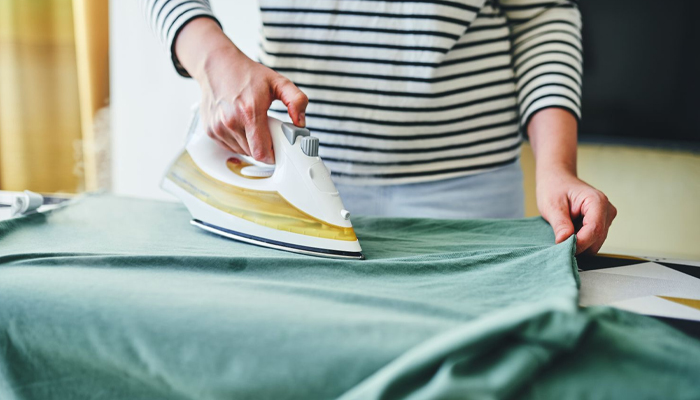
If you let clothes hang outside until they’re bone-dry and stiff, they’ll be harder to iron. Wrinkles become more “set” in dry fabric, and the stiffness can make pressing more difficult. A better option? Bring them in while still slightly damp for easier ironing and less wear on the fibers.
Skip the Sun for These Fabrics
Certain materials should never be dried in direct sun—like silk, lace, spandex, and anything labeled “delicate.” These fabrics can shrink, fade, or break down very quickly. For those, always choose indoor drying or a low-heat tumble option.
A Clothesline Isn’t the Problem—It’s How You Use It
To be clear, sun-drying isn’t bad across the board. It’s how you do it that matters. A little awareness about UV damage, drying times, and fabric type can go a long way. By adjusting your habits—like switching to shaded drying or using the sun during gentler hours—you can extend the life of your wardrobe and still enjoy that fresh, sun-dried feeling.
